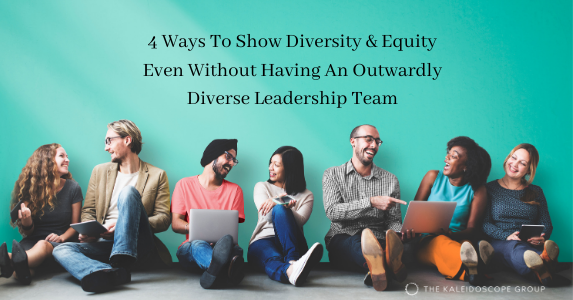The Role of Allyship in Diversity, Equity, and Inclusion: Moving from Awareness to Action
June 19, 2024

Allyship is more than a concept—it’s a commitment to actively support and advocate for those whose voices have often been overlooked. This powerful act of solidarity creates a workplace where every individual’s perspective is not only heard but valued. That is a worthy ideal.
The true power of this ideal lies in its practical application and HR professionals shaping global strategies are uniquely positioned to transform awareness into tangible results. This transition from understanding to action is crucial in cultivating lasting change that permeates every level of an organization.
Defining Allyship in the Workplace
But first, what does allyship in the workplace actually look like? It is the use of one’s influence and resources to advocate for others. It is an ongoing, proactive process of building relationships based on trust, consistency and accountability with marginalized individuals or groups within organizations. Allyship breaks down barriers, as it fosters a sense of belonging while also driving meaningful change that goes beyond surface-level diversity, equity and inclusion (DEI) efforts.
Allyship can be incorporated long before employees join as it can be a part of recruitment. Once on board, HR professionals can also incorporate this concept into retention and leadership development initiatives to create a more inclusive global workforce that drives innovation and performance. Effective allyship also involves being aware of, and sensitive to, cultural differences, especially in regards to how DEI initiatives are both perceived and addressed, requiring HR professionals to be adaptable and committed to ongoing learning and growth.
The Impact of Allyship
Successful allyship can transform organizational culture and drive tangible results. For instance, a global tech company implemented a reverse mentoring program where senior executives were paired with junior employees from underrepresented groups. This initiative not only provided valuable insights to leadership, but also created pathways for career advancement for marginalized employees. Another example is a multinational corporation that empowered employee-resource groups to influence policy changes, resulting in more inclusive parental leave policies and flexible work arrangements.
But success of these initiatives hinges on several key factors. First, unwavering commitment from top leadership sets the tone for the entire organization. Second, providing education and resources to potential allies helps them understand their role and take meaningful action. Next, creating accountability measures ensures that allyship efforts are not only sustained, but also impactful to the people and the organization. And finally, celebrating and recognizing acts of allyship reinforces its importance within the organization.
Allyship plays a crucial role in mentorship programs for underrepresented talent. By pairing allies with underrepresented talent, organizations can provide valuable guidance, expand professional networks and create opportunities for career advancement. These relationships often lead to increased retention and job satisfaction among mentees. Job-description-allies can contribute to more inclusive hiring practices by reviewing job descriptions for biased language and unnecessary requirements that may deter diverse candidates. They can advocate for skills-based hiring approaches that focus on competencies rather than traditional credentials. Diverse interview panels, including allies trained in inclusive hiring practices, can help mitigate unconscious bias in the selection process. Allies on these boards can also ensure that candidates are evaluated fairly and that diversity in all forms is considered a valuable asset.
Allyship also extends to scrutinizing hidden biases for even greater impact. One place worth analyzing in almost any organization is promotion criteria, performance evaluation methods or compensation structures. For example, a finance company discovered gender pay gaps through such an analysis and implemented corrective measures, demonstrating the power of allyship in creating systemic change.
Challenges and Barriers to Effective Allyship
One of the primary challenges to effective allyship is a lack of awareness or understanding. Many individuals may be unintentionally perpetuating biases or discriminatory practices simply because they’re unaware of the experiences of marginalized groups. This ignorance can manifest in microaggressions, exclusionary behaviors or a failure to recognize systemic inequities within the organization.
Another significant barrier is the perception that DEI issues are, “someone else’s problem.” Some employees may feel that, as long as they’re not actively discriminating, they don’t need to take an active role in promoting inclusivity. This passive stance can hinder progress and maintain the status quo, even when overt discrimination is absent.
Fear can also be a powerful deterrent to allyship. Potential allies may worry about saying the wrong thing, overstepping boundaries or facing backlash from colleagues who are resistant to change, possibly creating concerns about negative impacts on one’s own career progression or social standing within the organization.
To address these challenges, organizations can implement several strategies:
- Develop clear guidelines and resources for allyship, providing concrete examples of how individuals can take action in their daily work lives.
- Invest in comprehensive education programs that raise awareness about unconscious bias, privilege, and the experiences of marginalized groups.
- Create safe spaces for open dialogue where employees can ask questions, share experiences, and learn from each other without fear of judgment.
- Implement accountability measures that recognize and reward allyship efforts, making it a valued part of performance evaluations and career development.
- Lead by example, with senior leadership actively demonstrating allyship and discussing its importance to the organization’s success.
- Offer ongoing support and coaching for allies, recognizing that becoming an effective ally is a journey that requires continuous learning and growth.
- Measure the impact for the organization, (mission and business) utilizing the right metrics. Activities are a good start but evolvig to impact through the KPIs associated with culture, productivity, and the bottom line will keep the commitment and work sustainable.
Creating a Culture of Allyship
Creating a culture of allyship requires a comprehensive approach that permeates every level of the organization. It starts with top-level commitment, who not only endorse allyship initiatives, but actively participate in them, setting a powerful example for others to follow. This goes beyond mere statements of support; it requires active, visible engagement, regularly communicating the importance of its value to the organization. In turn, their efforts trickle down through middle management, who play a crucial role in translating high-level commitment into day-to-day practices. They can integrate allyship into team meetings, project assignments and performance discussions. Theirs and upper management’s combined efforts will, if done correctly, effortlessly resonate with the frontline employees, empowering them to speak up, challenge exclusionary behaviors and support their fellow colleagues.
Allyship often requires courage and moral fortitude. It means being willing to step out of one’s comfort zone, challenge the status quo and sometimes face resistance or criticism. Organizations need to cultivate an environment where this kind of moral courage is valued and supported. This might involve recognizing and celebrating instances of courageous allyship, providing resources and support for those who speak up against inequities, and creating clear channels for reporting and addressing concerns without fear of retaliation.
Allocating resources to support allyship initiatives and DEI efforts demonstrates tangible commitment. Integrating allyship into leadership development programs and succession planning ensures its sustainability. By consistently demonstrating these behaviors, DEI leaders can create a ripple effect throughout the organization, normalizing allyship and making it an integral part of the organization culture.
Moving from Awareness to Action
Awareness, in all of its complexities, is just the beginning; true allyship requires action. Start by actively listening to and amplifying marginalized voices within your organization. This could mean giving credit to often-overlooked colleagues in meetings, or sharing their ideas with senior leadership. Educate yourself by seeking out resources, attending workshops and engaging in conversations with people from diverse backgrounds. Additionally, consider mentoring or sponsoring individuals from underrepresented groups, offering guidance, support, and access to your professional networks.
But action does not just have to be at the individual level. Organizations play a crucial role as well, establishing employee resource groups (ERGs) and encouraging allies to participate and support these groups actively. Create formal mentorship and sponsorship programs that pair allies with employees from underrepresented groups. Implementing transparent reporting mechanisms for DEI metrics and holding leaders accountable for progress is essential. This not only demonstrates the organization’s commitment but also provides tangible goals for allies to work toward.
To encourage more individuals to step into allyship roles, organizations should focus on de-risking these efforts:
- Create a psychologically safe environment where mistakes are viewed as learning opportunities rather than grounds for punishment.
- Offer clear guidelines and resources for allyship, including how to navigate difficult conversations and situations.
- Publicly recognize and reward allyship efforts, making it clear that such actions are valued and supported by the organization.
- Provide ongoing coaching and support for allies, acknowledging that becoming an effective ally is a continuous journey of growth and learning.
Incentivizing Allyship Behavior
Recognizing allyship efforts in organization-wide communications is a powerful way to incentivize and normalize these behaviors. This could include featuring allies in internal newsletters, highlighting their efforts during town hall meetings or sharing success stories on the organization intranet. By spotlighting individuals who exemplify strong allyship, organizations not only reward these behaviors but also provide clear examples for others to emulate.
Offering allies opportunities to participate in high-visibility projects can serve as a significant incentive. This might involve including allies in cross-functional teams working on important initiatives, or giving them the chance to lead diversity-focused projects. Such opportunities not only reward allyship but also allow allies to further develop their skills and expand their influence within the organization.
Organizing allyship retreats and team-building activities can also be an effective way to incentivize and deepen commitment to these practices. These events provide a dedicated space for allies to connect, share experiences, and learn from one another. They can include workshops, role-playing exercises, and discussions facilitated by DEI experts. Such activities not only reward current allies but also attract potential new allies by showcasing the personal and professional growth opportunities associated with allyship.
Including allies in strategic discussions about DEI initiatives and broader organizational goals is a powerful incentive that signals the value of their contributions. This involvement could take the form of inviting allies to participate in DEI task forces, contribute to policy development or provide input on recruitment and retention strategies. By giving allies a seat at the table, organizations demonstrate that allyship is not just appreciated but essential to the organization’s success.
Bringing it all Together
By implementing these incentives, both individuals and organizations can create a positive feedback loop where allyship is consistently recognized, rewarded and reinforced. These approaches not only motivate current allies to deepen their commitment, but also encourage others to step into allyship roles, fostering a more inclusive and equitable workplace culture. Incorporating cross-cultural training and cross-generational initiatives can further enhance these efforts, leading to more comprehensive cross-cultural solutions that address the diverse needs of a global workforce.
We’d love to talk about what the right next action is for you and your team!


